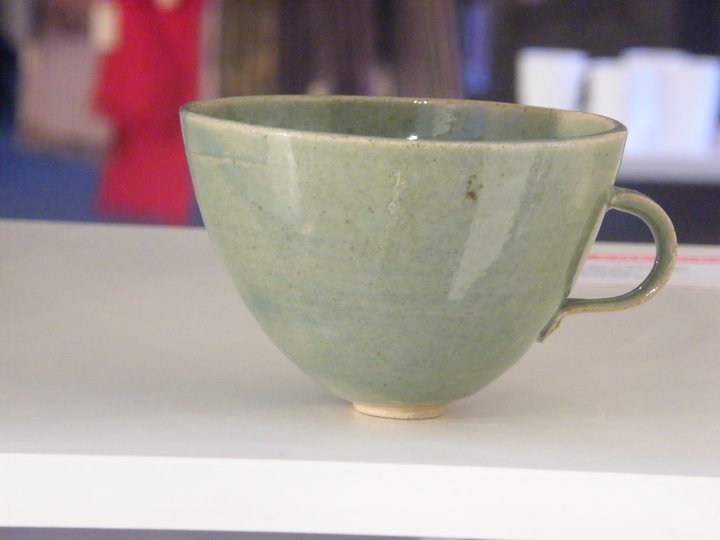My work is about stability and change; about the relationship between the past and the present; the relationship between people and objects; I have always been a maker of objects. My work refers to domesticity , eating and drinking, specifically tea drinking. Directly and indirectly these objects become loaded with meaning because of these activites and it is these meanings which intrigue me, push me onto ask questions which cannot be answered solely by the practice of making these objects.
Having graduated from Plymouth College of Art and Design in 2006
I now rent a small shared studio space in Plymouth. I have only recently started to make tableware and have spent the last couple of years finding a new direction and thus have changed my work.
For me, there is a huge history behind these everyday objects that I make. I have a lifelong association with them at the very least and they hold a special place in my life. I have used them on a daily basis everyday of my life and as a child played with plastic or miniature ceramic equivalents. They are daily constants in my life, some objects, even people, come and go but the mug/cup and teapot have stayed, not only is there a lifelong personal continuity here but a historical one. And as such they hold a special place in the cultural history of western societies. They tie us to the past whether we are aware of it or not. Whether someone chooses to use a teapot or not is not the issue here they still exist within the repertoire of everyday western objects.
I have always been beguiled by cups and teapots I have been making tableware on a pottery wheel and by slipcasting. I have been constructing a social biography of an everyday object which is still in use, the cup/ mug , the individual handled drinking vessel - a genealogy of an everyday item according to Michael Shanks is a pragmatogony.
My research shows that it is well documented how the teapot was introduced but not the cup/mug, the individual handled, ceramic, drinking vessel, its origins are less clear, and its introduction does not seem to be a watershed like the teapot. What is an intriguing thought is that there was a time when the mug/cup didn’t exist. The mug/cup as an everyday object has been made, bought, used and discarded or in some cases collected and curated now for nearly six hundred years- how has this happened? Indeed, the Medieval Pottery Research Group(1998) says that “vessels which were designed specifically for drinking are rare before the later medieval period”. Much of the evidence for its introduction is archaeological as well as collections such as that at the V+A. Is there any other object that this has happened to? The book, specifically the English bible, undoubtedly; the clay pipe, however, became obsolete.
These vessels emerged as part of a transitional phase which has been defined by archaeologists using transitional groups of pottery found in archaeological contexts representing the change from medieval to the early modern period. Some vessels became obsolete, some like the mug and plate have continued. According To Michael Shanks it is stability which needs to be explained and that change is the norm. One of my questions is why has the mug/cup continued in existence?
I also make thrown bowls, teapots, mugs, platters. I have made bowls, teapots, am making an installation of mugs having a conversation about their origins. I work in porcelain and all my work is totally functional and food safe. I also slipcast the mugs, and throw other vessels. Thus techniques are mixed here.
I am researching the history of western table ware which is a history of the modern world, also about relationships between social practices and material culture; Social change manifested in material culture; I am attempting to explore the interfaces of two disciplines- art and archaeology with the integration of research into artistic practice.
.
